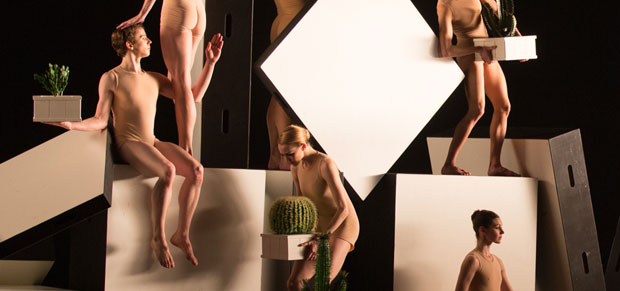
© Rosalie O’Connor. (Click image for larger version)
Boston Ballet
Program A: The Second Detail, Resonance, Cacti
New York, David H. Koch Theater
25 June 2014
www.bostonballet.org
www.davidhkochtheater.com
If William Forsythe was ballet’s groundbreaking pioneer of the late 1980s and early 1990s, Alexander Ekman might be its next maverick, making Boston Ballet’s first program at Lincoln Center – opening with Forsythe, ending with Ekman – a tidily bookended bill. Jose Martinez’s Resonance, which had its world premiere with Boston Ballet earlier this year, sits neatly in the middle. Artistic Director Mikko Nissinen deserves kudos for bringing the company to New York for the first time since the early 1980s, and for choosing challenging programming too. Lucky viewers of Program B get to see Jiří Kylián’s sublime Bella Figura, a work not seen enough on these shores.

© Gene Schiavone. (Click image for larger version)
Ekman’s Cacti received ‘Bravos’ mid-performance and a standing ovation at its conclusion, both well deserved. Cacti is a witty, rhythmic and occasionally nonsensical composition that crackles with electricity. It is like nothing else most dance-goers have seen, unless they’ve seen another Ekman.
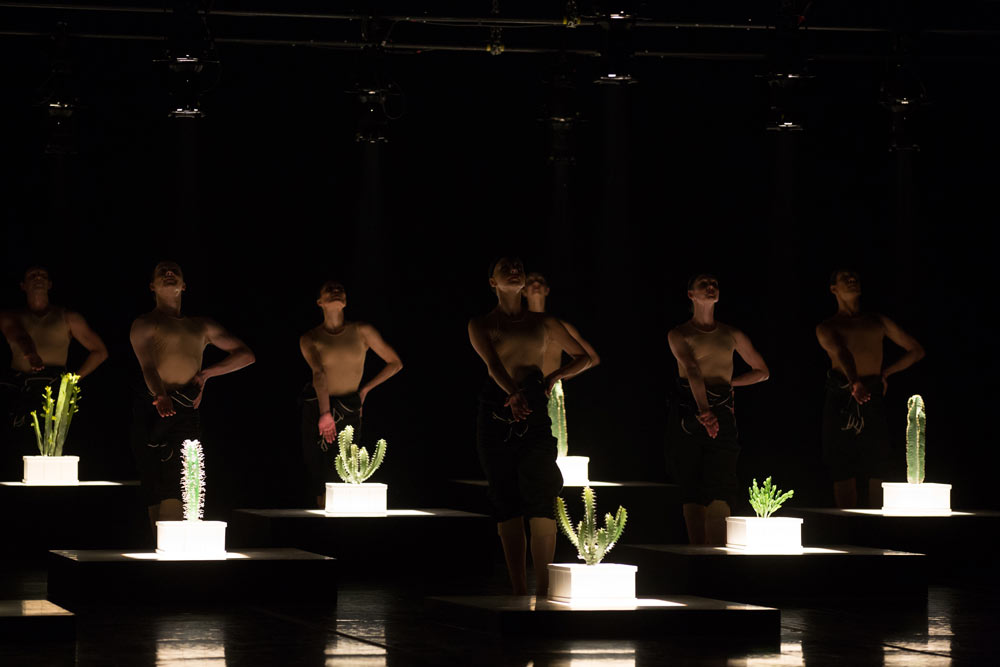
© Rosalie O’Connor. (Click image for larger version)
Like the best comedians, Ekman is as facetious as he is profound, leaving the viewer with plenty to ponder post-performance. Cacti pokes fun at criticism, art and even relationships – both personal and professional. Ekman makes you smile because he changes directions deftly, on a dime. The troupe could be in the midst of a “Stomp!” – like rhythm session (drumming with their hands) or running in place like a group of sailors, and they’ll stop, strike a semaphoric pose, and smile. The audience giggles because it is absurd, delightful and a little unnerving. Sensitive to staging, Ekman set Cacti to an amalgam score of Beethoven, Haydn, Mahler, Schubert and Stein, which is largely performed onstage by a roving string quartet.
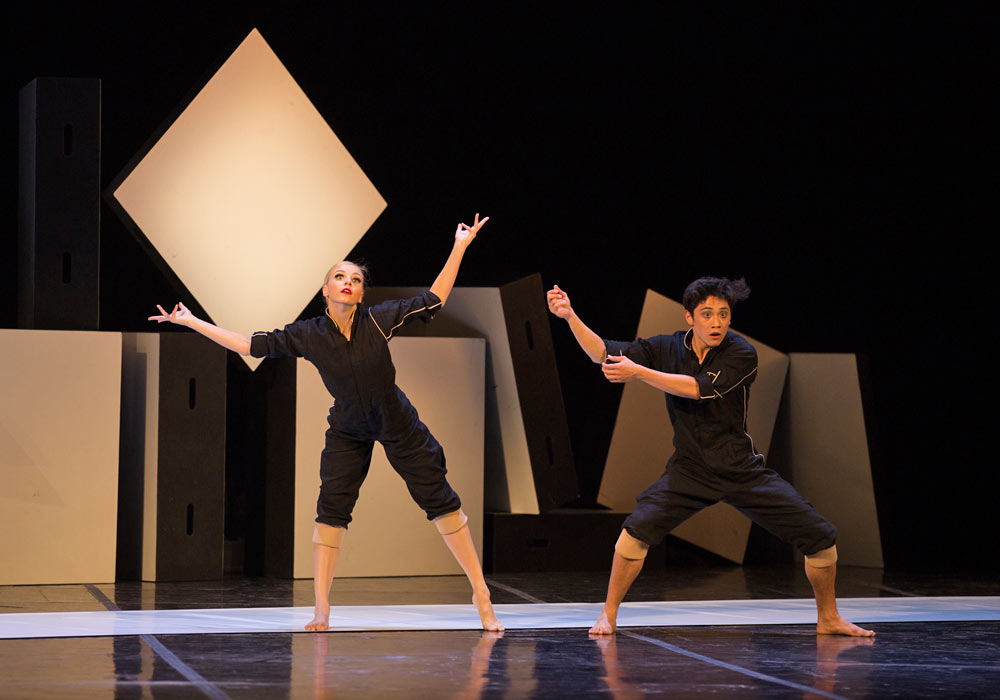
© Rosalie O’Connor. (Click image for larger version)
Incorporating the theatrical without diluting the dance, Ekman consistently pairs a droll script with witty movement, as in the case of a duet, performed Wednesday night by Whitney Jensen and Jeffrey Cirio. Speaking to each other and to themselves, the couple fleshes out choreography through a series of contact movements, in the course of which they end whatever non-professional relationship they have. ‘What about the cat?’ even makes it into the quibble, with surprising punch. The entire exchange is reminiscent of Casebolt and Smith’s O(h) which, like Cacti, also debuted in 2010.
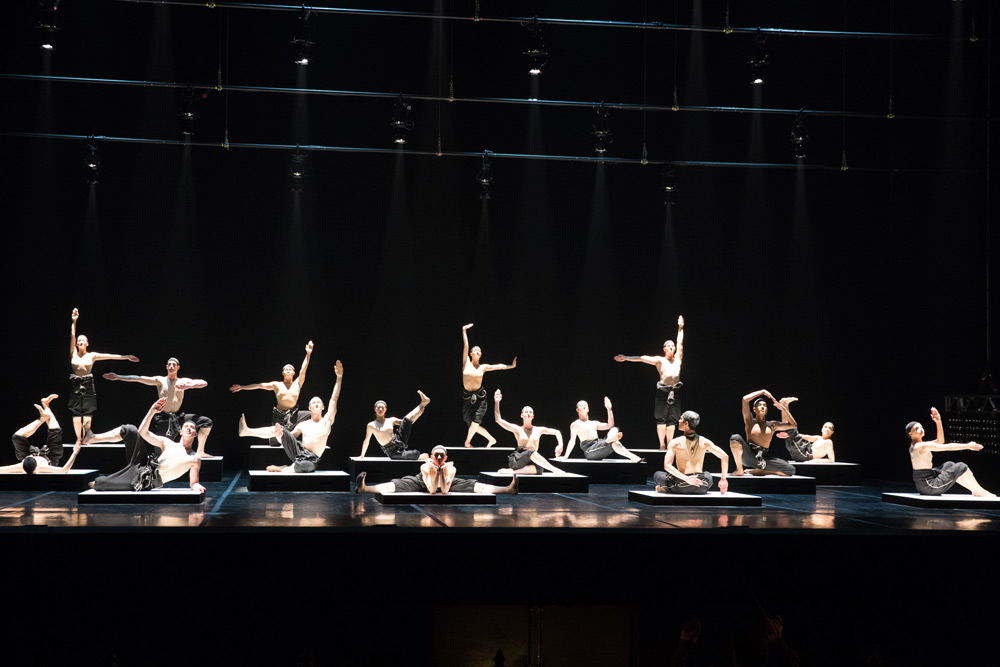
© Rosalie O’Connor. (Click image for larger version)
Ekman has a gift for ensemble movement and, like Warhol, knows how to use repetition en masse to striking effect. As for the Cacti, the succulents are paraded around by the dancers and get their own spotlights. The narrator informs us the cacti are the ‘host of the subtext… too subtle to detect.’ The audience roars and in Ekman we have a clear, incontestable winner.
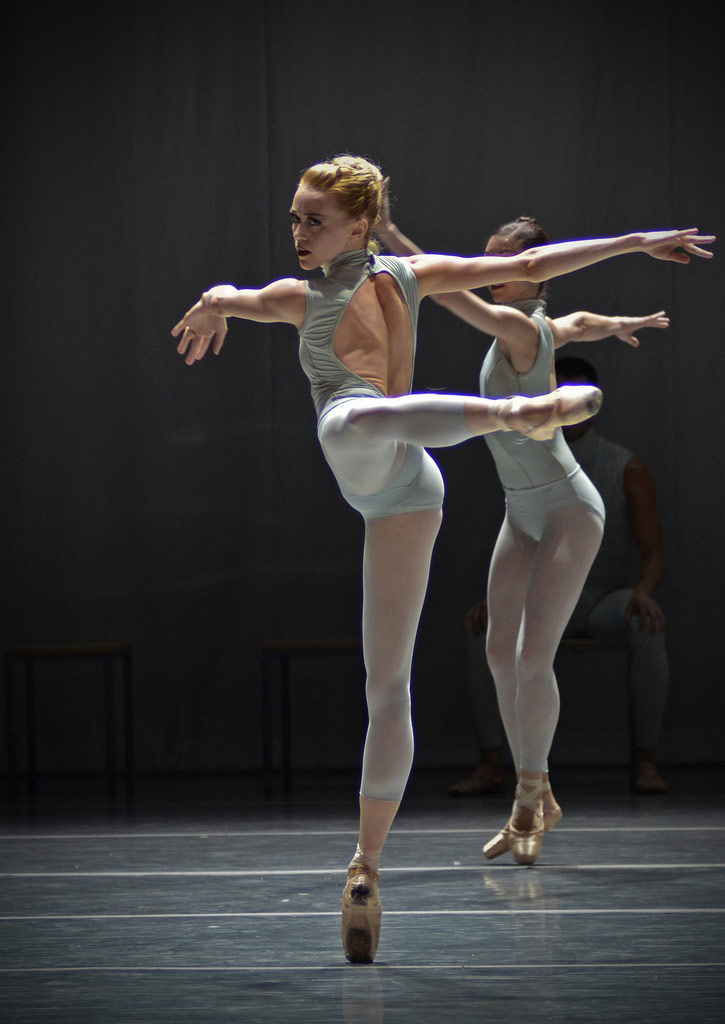
© Dave Morgan. (Click image for larger version)
The Second Detail is early 90s Forsythe and is, like ‘In the Middle, Somewhat Elevated’ that came before it, unforgiving choreography. Not only is it technically difficult and fast, but a tilt of the head or shoulder angle different from the rest and the entire package looks off. Boston Ballet has the dancers to do Forsythe, but Wednesday it appeared opening night jitters got the better of them, or maybe the music was faster than they were used to. Either way, it appeared rushed. The corps was not together, and the overall ownership of the movement wasn’t quite there, but it’s close. Packed with gymnastic-style athleticism, there were legs flown wide open, as the choreography requires, but without the cool control that gives Forsythean work its real punch.
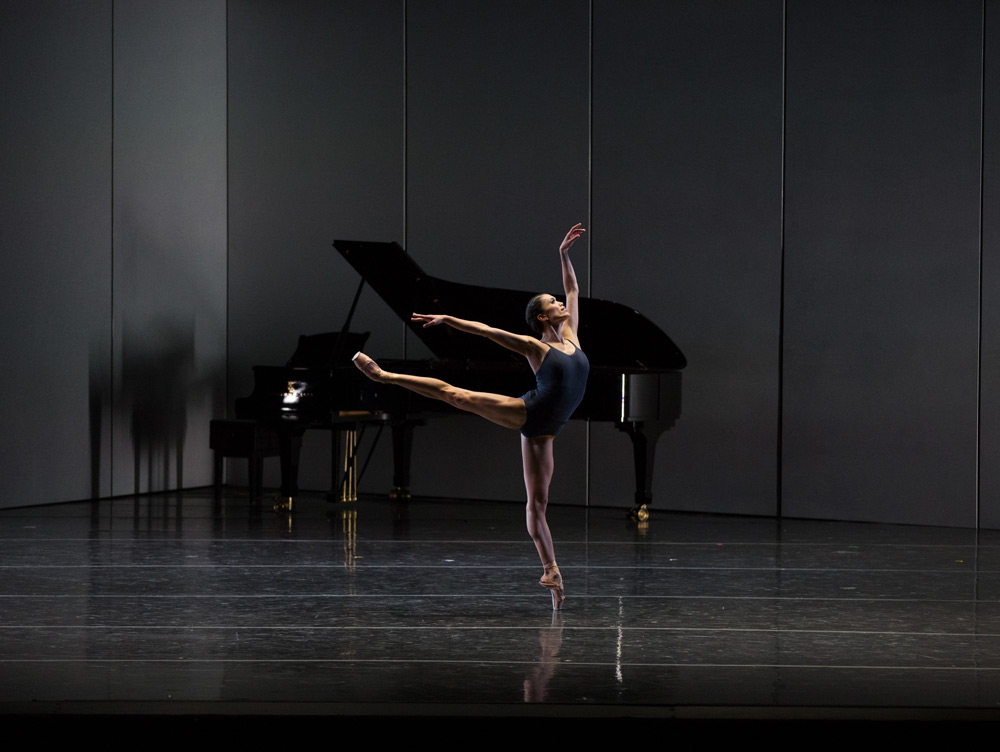
© Rosalie O’Connor. (Click image for larger version)
Created for Boston Ballet, Martinez’s Resonance is his first work to be shown in America. One of Nureyev’s proteges at the Paris Opera Ballet, Martinez has turned his talents to choreography. Resonance, with its high-contrast lighting and stark set, appears to set out to be moody and brooding, and parts of it are, especially when Lia Cirio was on stage. But Dusty Button, performed with a lighthearted gaiety that didn’t quite match the charcoal sets and costumes. Even non-narrative Balanchine works tend to have a consistent mood. Some of the pas de deux work was lovely and hinted at influences from MacMillan and Neumeier, and Nureyev would have approved of the numerous male solos. New artists need platforms for presentation, and Martinez’s Resonance is not undeserving, but could be both prettier and more inventive. Maybe next time.











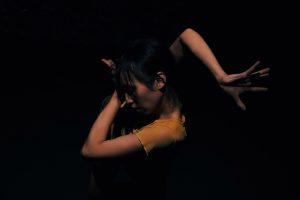


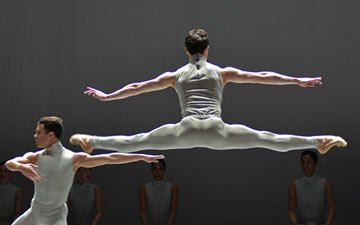
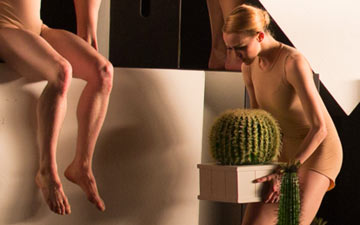
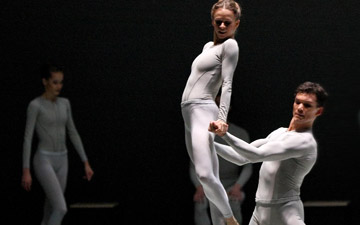
You must be logged in to post a comment.